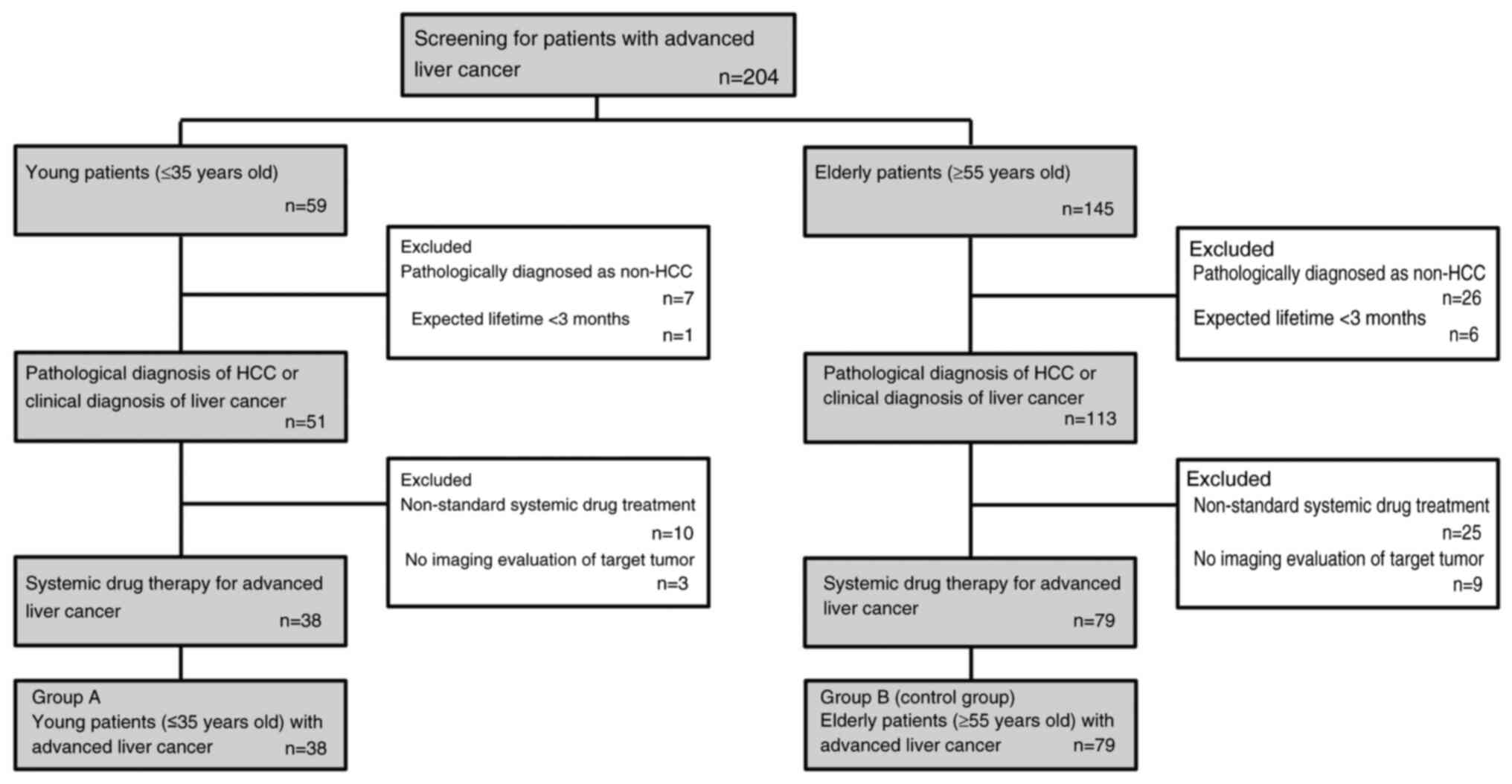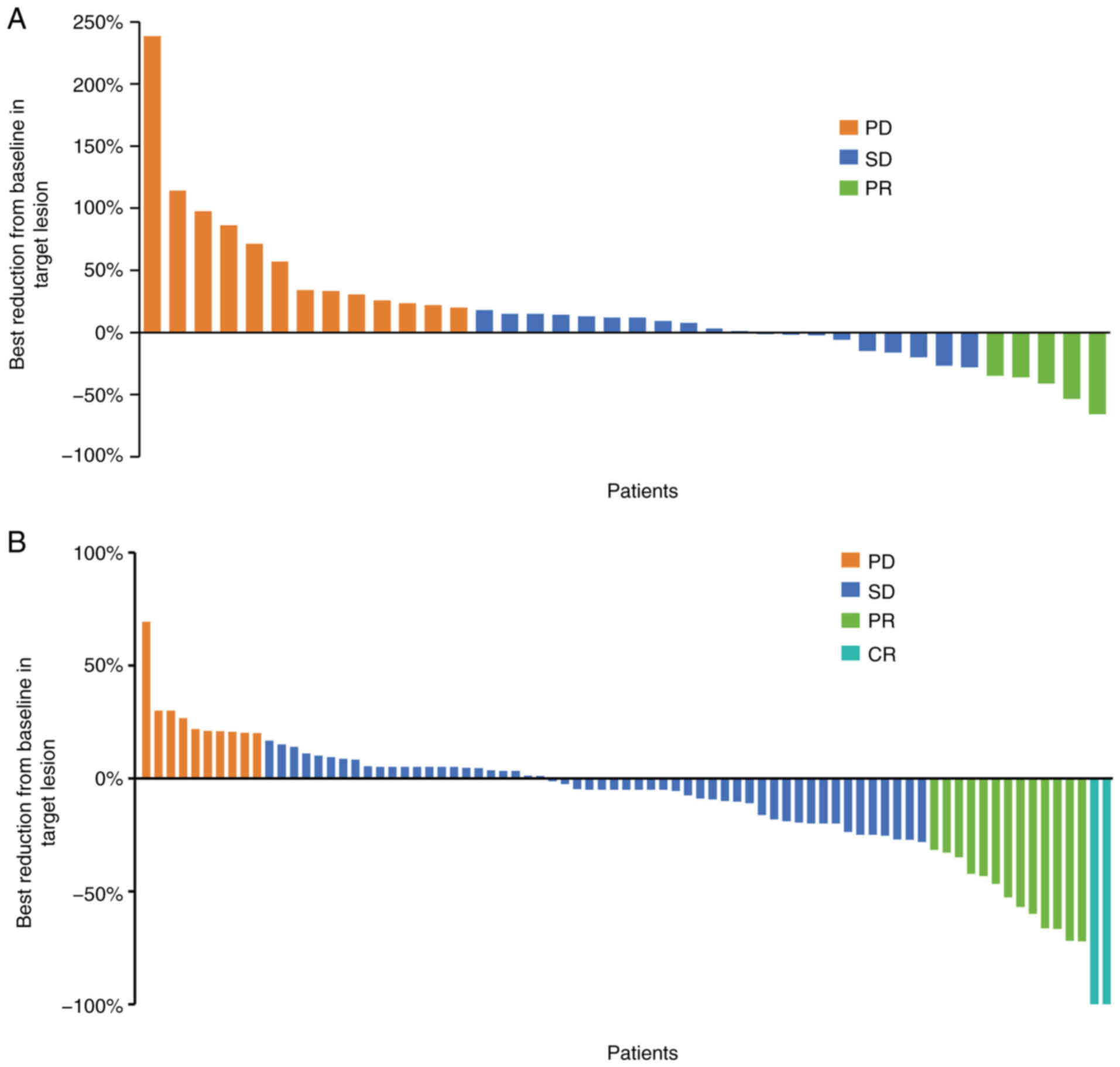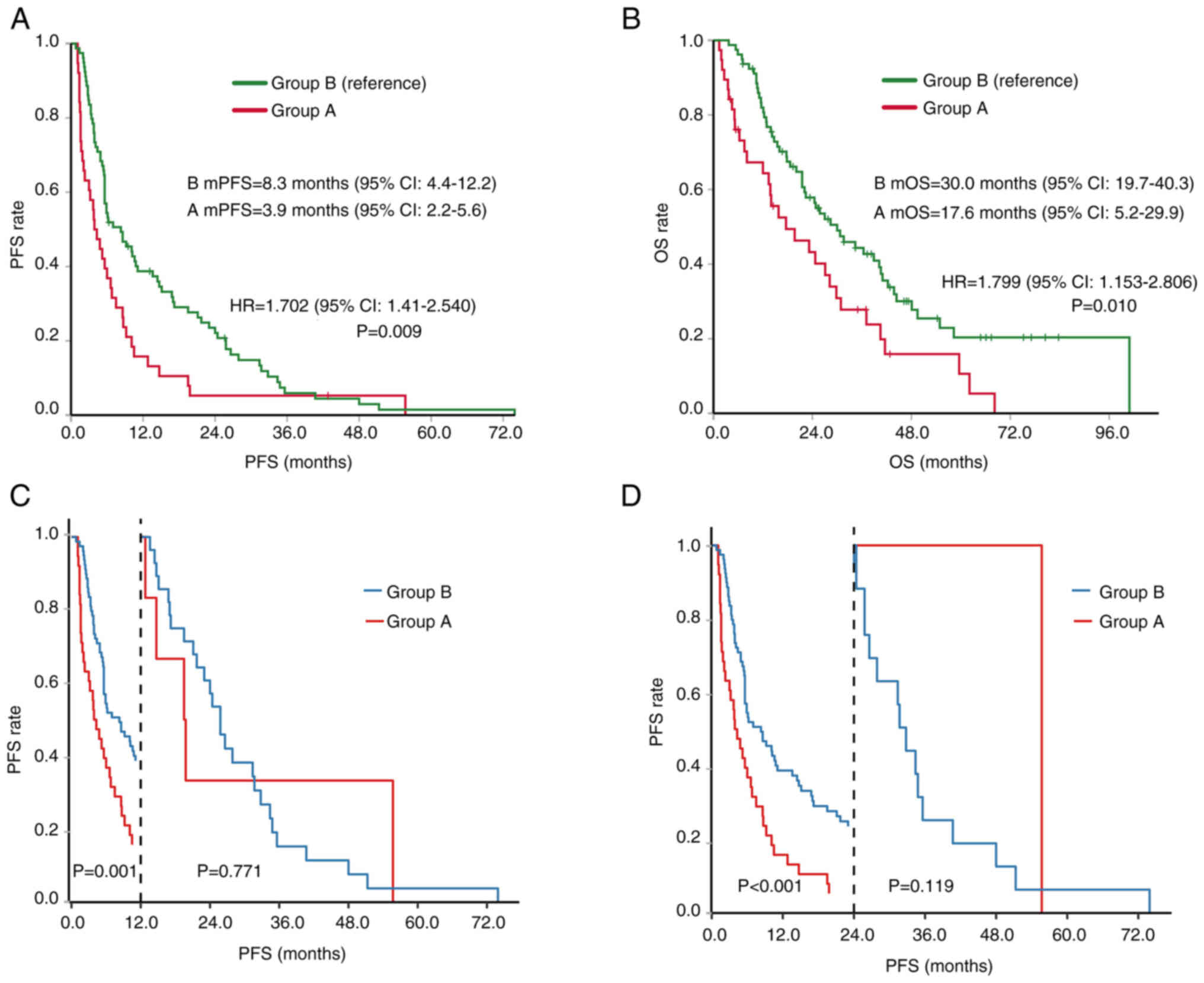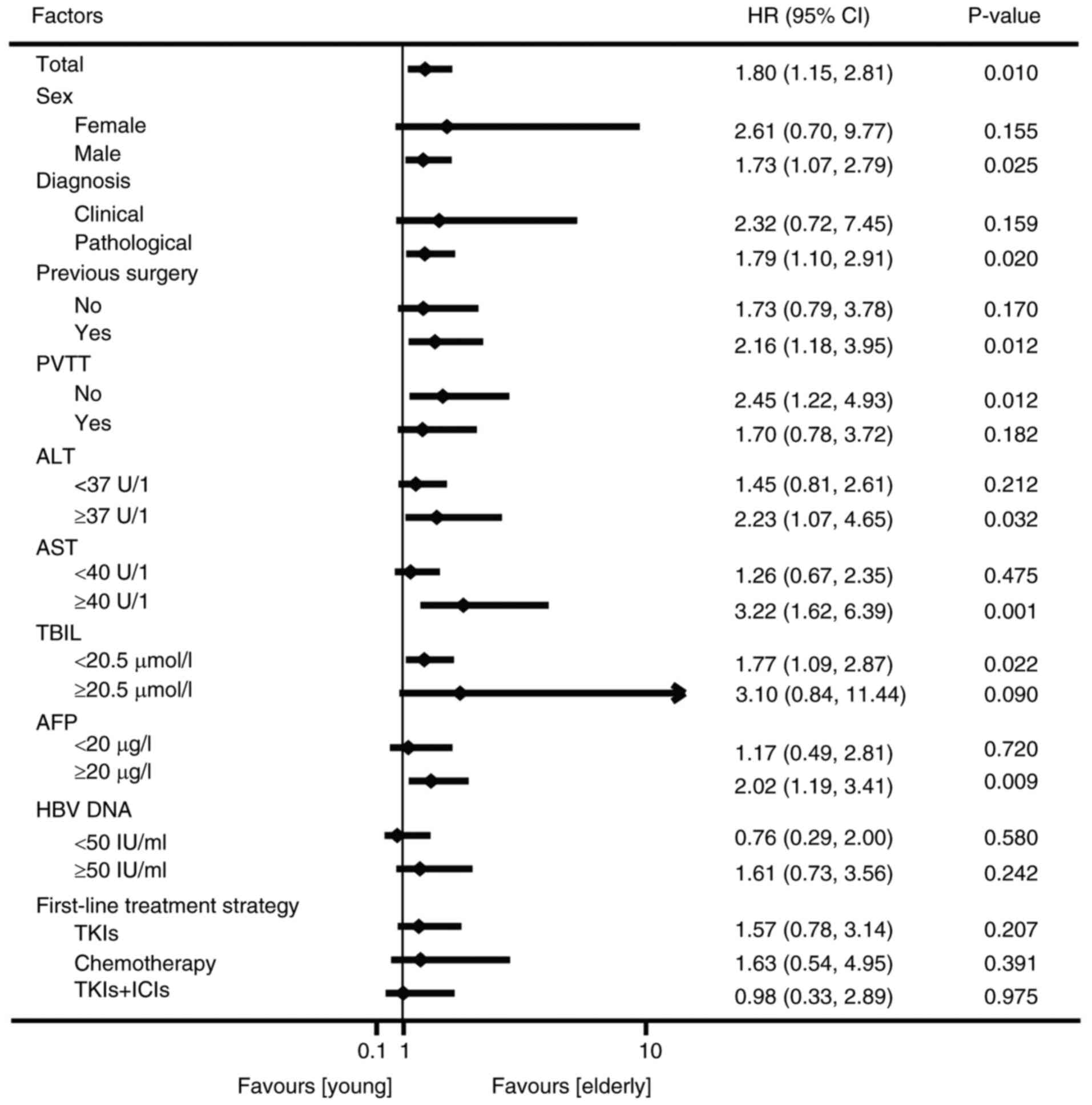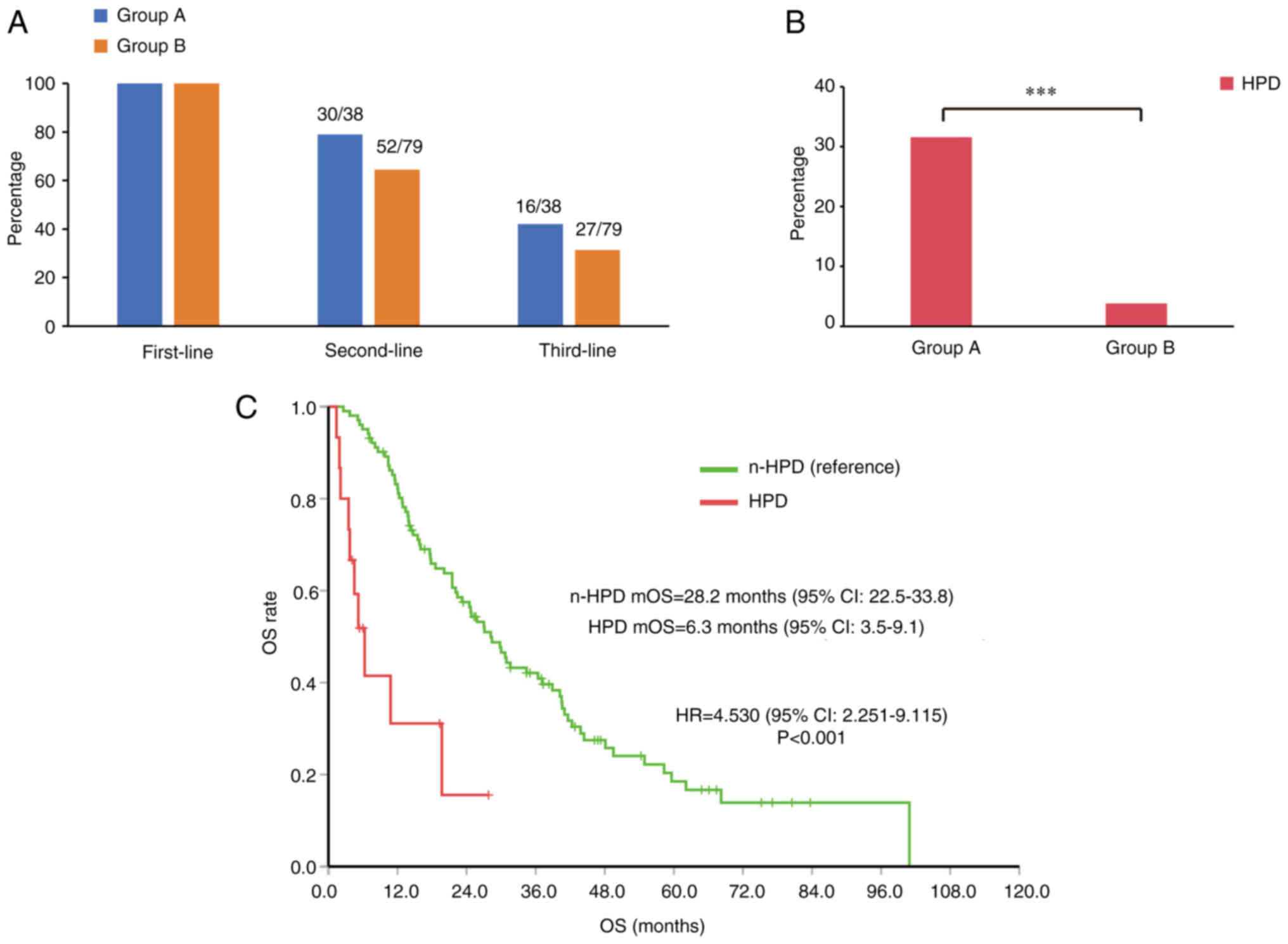|
1
|
Sung H, Ferlay J, Siegel RL, Laversanne M,
Soerjomataram I, Jemal A and Bray F: Global cancer statistics 2020:
GLOBOCAN estimates of incidence and mortality worldwide for 36
cancers in 185 countries. CA Cancer J Clin. 71:209–249. 2021.
View Article : Google Scholar : PubMed/NCBI
|
|
2
|
Tian T, Song C, Jiang L, Dai J, Lin Y, Xu
X, Yu C, Ge Z, Ding Y, Wen Y, et al: Hepatitis B virus infection
and the risk of cancer among the Chinese population. Int J Cancer.
147:3075–3084. 2020. View Article : Google Scholar : PubMed/NCBI
|
|
3
|
Li Z, Hou X and Cao G: Is mother-to-infant
transmission the most important factor for persistent HBV
infection? Emerg Microbes Infect. 4:e302015. View Article : Google Scholar : PubMed/NCBI
|
|
4
|
Li Z, Xie Z, Ni H, Zhang Q, Lu W, Yin J,
Liu W, Ding Y, Zhao Y, Zhu Y, et al: Mother-to-child transmission
of hepatitis B virus: evolution of hepatocellular carcinoma-related
viral mutations in the post-immunization era. J Clin Virol.
61:47–54. 2014. View Article : Google Scholar : PubMed/NCBI
|
|
5
|
Fu J, Yang J, Tan Y, Jiang M, Wen F, Huang
Y, Chen H, Yi C, Zheng S and Yuan Y: Young patients (≤35 years old)
with colorectal cancer have worse outcomes due to more advanced
disease: A 30-year retrospective review. Medicine (Baltimore).
93:e1352014. View Article : Google Scholar : PubMed/NCBI
|
|
6
|
Kath R, Fiehler J, Schneider CP and
Höffken K: Gastric cancer in very young adults: Apropos four
patients and a review of the literature. J Cancer Res Clin Oncol.
126:233–237. 2000. View Article : Google Scholar : PubMed/NCBI
|
|
7
|
Wang J, Wang J, Li Q, Zhang P, Yuan P, Ma
F, Luo Y, Cai R, Fan Y, Chen S, et al: Young breast cancer patients
who develop distant metastasis after surgery have better survival
outcomes compared with elderly counterparts. Oncotarget.
8:44851–44859. 2017. View Article : Google Scholar : PubMed/NCBI
|
|
8
|
Cheng L, Chen S, Wu W, Kuo ZC, Wei Z, Meng
S, Chen C, Zhang C and He Y: Gastric cancer in young patients: A
separate entity with aggressive features and poor prognosis. J
Cancer Res Clin Oncol. 146:2937–2947. 2020. View Article : Google Scholar : PubMed/NCBI
|
|
9
|
Theuer CP, Kurosaki T, Taylor TH and
Anton-Culver H: Unique features of gastric carcinoma in the young:
A population-based analysis. Cancer. 83:25–33. 1998. View Article : Google Scholar : PubMed/NCBI
|
|
10
|
Li Z, Han N, Ren X, Zhang Y and Chu X:
Effectiveness of TKI Inhibitors Combined With PD-1 in Patients With
Postoperative Early Recurrence of HCC: A Real-World Study. Front
Oncol. 12:8338842022. View Article : Google Scholar : PubMed/NCBI
|
|
11
|
Selene II, Ozen M and Patel RA:
Hepatocellular Carcinoma: Advances in systemic therapy. Semin
Intervent Radiol. 41:56–62. 2024. View Article : Google Scholar : PubMed/NCBI
|
|
12
|
Tanaka J, Kurisu A, Ohara M, Ouoba S,
Ohisa M, Sugiyama A, Wang ML, Hiebert L, Kanto T and Akita T:
Burden of chronic hepatitis B and C infections in 2015 and future
trends in Japan: A simulation study. Lancet Reg Health West Pac.
22:1004282022.PubMed/NCBI
|
|
13
|
Mogul DB, Ling SC, Murray KF,
Schwarzenberg SJ, Rudzinski ER and Schwarz KB: Characteristics of
Hepatitis B virus-associated hepatocellular carcinoma in children:
A multi-center study. J Pediatr Gastroenterol Nutr. 67:437–440.
2018. View Article : Google Scholar : PubMed/NCBI
|
|
14
|
Jacob KA, Hjortnaes J, Kranenburg G, de
Heer F and Kluin J: Mortality after cardiac surgery in patients
with liver cirrhosis classified by the Child-Pugh score. Interact
Cardiovasc Thorac Surg. 20:520–530. 2015. View Article : Google Scholar : PubMed/NCBI
|
|
15
|
Llovet JM, Brú C and Bruix J: Prognosis of
hepatocellular carcinoma: The BCLC staging classification. Semin
Liver Dis. 19:329–338. 1999. View Article : Google Scholar : PubMed/NCBI
|
|
16
|
Kubota Y, Yoshimura K, Hamada K, Hirasawa
Y, Shida M, Taniguchi M, Matsui H, Ariizumi H, Ishiguro T, Suzuki
N, et al: Rare Nivolumab-associated super hyper progressive disease
in patients with advanced gastric cancer. In Vivo. 35:1865–1875.
2021. View Article : Google Scholar : PubMed/NCBI
|
|
17
|
Ding P, Wen L, Tong F, Zhang R, Huang Y
and Dong X: Mechanism underlying the immune checkpoint
inhibitor-induced hyper-progressive state of cancer. Cancer Drug
Resist. 5:147–164. 2022.PubMed/NCBI
|
|
18
|
Ju Y, Han G, Zhang P, Xu J, Chen C, Jiang
H, Yuan D, Ye X and Zhou G: Staging and clinical characteristics of
pregnant women with chronic hepatitis B virus infection: A
retrospective cohort study from Nanjing, China. J Obstet Gynaecol
Res. 49:2427–2435. 2023. View Article : Google Scholar : PubMed/NCBI
|
|
19
|
Pu JL, Chen Z, Yao LQ, Feng JY, Diao YK,
Guan MC, Li JD, Chen ZL, Zhou YH, Wang H, et al: Long-term
oncological prognosis after curative-intent liver resection for
hepatocellular carcinoma in the young versus the elderly:
Multicentre propensity score-matching study. BJS Open.
6:zrab1452022. View Article : Google Scholar : PubMed/NCBI
|
|
20
|
Almohaid S and Akhtar S: Diet, lifestyle
factors, comorbidities, and hepatocellular carcinoma risk in a
middle eastern country: A case-control study. BMC Cancer.
24:6942021. View Article : Google Scholar : PubMed/NCBI
|
|
21
|
Zhang W, Jiang R, Hou J and Sun B:
Clinicopathological features and prognostic factors of young
patients with surgically treated liver cancer. Medicine
(Baltimore). 94:e6842015. View Article : Google Scholar : PubMed/NCBI
|
|
22
|
Ferrara R, Mezquita L, Texier M, Lahmar J,
Audigier-Valette C, Tessonnier L, Mazieres J, Zalcman G, Brosseau
S, Le Moulec S, et al: Hyperprogressive disease in patients with
advanced non-small cell lung cancer treated with PD-1/PD-L1
inhibitors or with single-agent chemotherapy. JAMA Oncol.
4:1543–1552. 2018. View Article : Google Scholar : PubMed/NCBI
|
|
23
|
Aoki T, Kudo M, Ueshima K, Morita M,
Chishina H, Takita M, Hagiwara S, Ida H, Minami Y, Tsurusaki M and
Nishida N: Incidence of hyper progressive disease in combination
immunotherapy and anti-programmed cell death protein 1/programmed
death-ligand 1 monotherapy for unresectable hepatocellular
carcinoma. Liver Cancer. 13:56–69. 2023. View Article : Google Scholar : PubMed/NCBI
|
|
24
|
Tanaka T, Koga H, Suzuki H, Iwamoto H,
Sakaue T, Masuda A, Nakamura T, Akiba J, Yano H, Torimura T and
Kawaguchi T: Anti-PD-L1 antibodies promote cellular proliferation
by activating the PD-L1-AXL signal relay in liver cancer cells.
Hepatol Int. 18:984–997. 2024. View Article : Google Scholar : PubMed/NCBI
|
|
25
|
Zhang L, Feng J, Kuang T, Chai D, Qiu Z,
Deng W, Dong K, Zhao K and Wang W: Blood biomarkers predict
outcomes in patients with hepatocellular carcinoma treated with
immune checkpoint Inhibitors: A pooled analysis of 44 retrospective
sudies. Int Immunopharmacol. 118:1100192023. View Article : Google Scholar : PubMed/NCBI
|
|
26
|
Li Q, Han J, Yang Y and Chen Y: PD-1/PD-L1
checkpoint inhibitors in advanced hepatocellular carcinoma
immunotherapy. Front Immunol. 13:10709612022. View Article : Google Scholar : PubMed/NCBI
|
|
27
|
Kim CG, Kim C, Yoon SE, Kim KH, Choi SJ,
Kang B, Kim HR, Park SH, Shin EC, Kim YY, et al: Hyperprogressive
disease during PD-1 blockade in patients with advanced
hepatocellular carcinoma. J Hepatol. 74:350–359. 2021. View Article : Google Scholar : PubMed/NCBI
|
|
28
|
Zhang L, Wu L, Chen Q, Zhang B, Liu J, Liu
S, Mo X, Li M, Chen Z, Chen L, et al: Predicting hyperprogressive
disease in patients with advanced hepatocellular carcinoma treated
with anti-programmed cell death 1 therapy. EClinicalMedicine.
31:1006732020. View Article : Google Scholar : PubMed/NCBI
|



